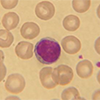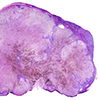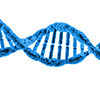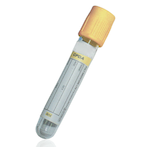
- Home
- Clinical Chemistry Tests
- C-Reactive Protein (CRP)
C-Reactive Protein (CRP)
Specimen Volume
200 uL blood (1 x paed Lith Hep tube)Sample Preparation
Centrifuge
Turnaround Time
1 daySample Processing In Laboratory
Usual
Sample Stability
Stable for 15 days at room temperature or 2 months at 4 ºC.
General Information
The main uses of CRP are to:
- Assess the intensity of inflammation or amount of tissue involved
- Monitor therapy in patients with rheumatoid arthritis, polymyalgia, systemic vasculitis or inflammatory bowel disease
- Detect intercurrent infections in systemic lupus erythematosus, in leukemia or after surgery
- Distinguish bacterial involvement in meningitis, neonatal illness or pneumonia.
- Predict outcomes, as persistently increased CRP indicates poor prognosis.
The identification of the importance of small, chronic elevations in [CRP] as a cardiovascular risk marker in apparently healthy individuals has led to the development of highly sensitive assays, commonly referred to as hs-CRP. CRP measurements can only be used to assess cardiovasular risk status if they are made in the absence of acute inflammation.
Patient Preparation
None
Notes
C-reactive protein (CRP), the most sensitive acute-phase protein synthesized in the liver, is normally present in serum in very low concentrations. It has a role in innate immunity and handling of diseased tissue, and is produced by the liver in response to interleukin-6, which is released from macrophages during the inflammatory response. Once complexed, CRP becomes an activator of the complement pathway. CRP levels increase rapidly, within 6h, in response to infection or injury, peaking between 24h and 48h, and often precedes clinical symptoms. The CRP response may be less pronounced in patients with liver disease.
Reference Range
Adult male/female reference range = 0-5 mg/L (Abbott Alinity)
Levels above 100 mg/L are associated with major trauma, acute bacterial infection or active inflammation.
Concentrations of up to 10 mg/L exclude many acute inflammatory diseases, but do not specifically exclude inflammatory processes.
Specifications
- EQA Status: IMMQAS CRP & PCT scheme
- EQAS Scheme: Yes
Creation Date
Monday, 08 August 2011Modification Date
Wednesday, 11 May 2022General Information
Location of Laboratories
Copyright UHB Pathology 2025
Protection of Personal Information – Pathology Laboratories Services comply with the Trust Data Protection Policy and have procedures in place to allow the Directorate and it’s employees to comply with the Data Protection Act 1998 and associated best practice and guidance.
The laboratories at Queen Elizabeth Hospital, Heartlands Hospital, Good Hope Hospital and Solihull Hospital form part of the services provided by University Hospitals Birmingham and are UKAS (United Kingdom Accreditation Service) accredited to the ISO 15189:2022 standard. For a list of accredited tests and other information please visit the UKAS website using the following link: https://www.ukas.com/find-an-organisation/
- Molecular Pathology is a UKAS accredited medical laboratory No. 8759
- Biochemistry is a UKAS accredited medical laboratory No. 8910
- Haematology and Transfusion is a UKAS accredited medical laboratory No. 8784
- Clinical Microbiology is a UKAS accredited medical laboratory No. 8760
- Cellular Pathology is a UKAS accredited medical laboratory No. 10141
- United Kingdom Health Security Agency laboratory is a UKAS accredited medical laboratory No.8213
Tests not appearing on the UKAS Schedule of Accreditation currently remain outside of our scope of accreditation. However, these tests have been validated to the same high standard as accredited tests and are performed by the same trained and competent staff.
For further test information, please visit the test database: https://qehbpathology.uk/test-database
For further information contact Louise Fallon, Quality Manager, 0121 371 5962/ 0121 424 1235
 Biochemistry
Biochemistry Haematology and Transfusion
Haematology and Transfusion Clinical Microbiology (Including Virology)
Clinical Microbiology (Including Virology) Cellular Pathology
Cellular Pathology General Information
General Information Molecular Pathology
Molecular Pathology